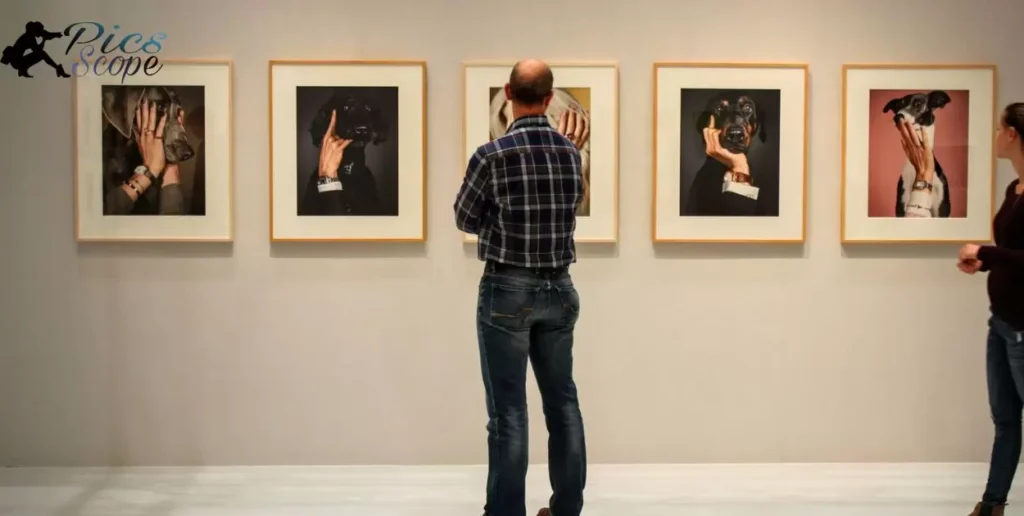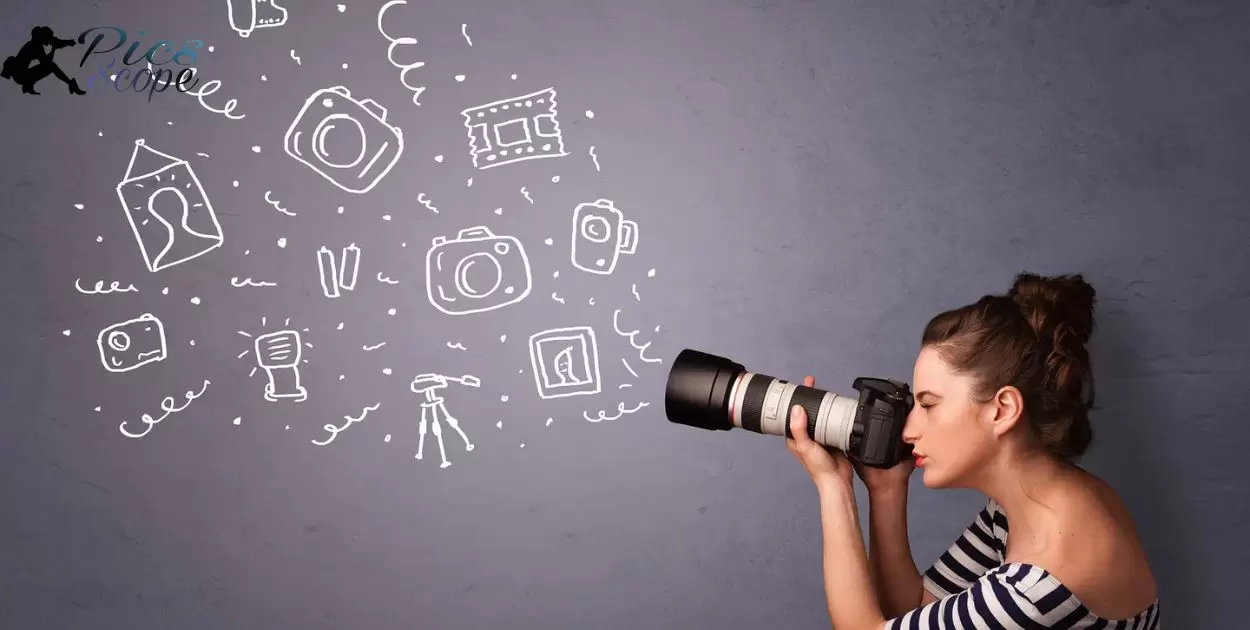A “Photography Exhibition” is a curated display of photographs, showcasing the artistic and visual expressions of photographers. It provides a platform for photographers to present their work to the public, fostering appreciation for diverse perspectives and creative storytelling through the lens.
Embark on a captivating journey into the world of photography as you discover the art of curating a stellar exhibition. Unlock the secrets of showcasing your visual narrative with precision and flair. Ready to transform your passion into a breathtaking display? Learn how to do a photography exhibition and let your creativity shine on the gallery walls!
Curating a photography exhibition involves selecting your best shots, organizing them thoughtfully, and creating a compelling narrative. From choosing the right venue to mastering the art of display, learn the essential steps and unleash the power of your visual storytelling in a captivating showcase.
How To Display Photographs For Exhibition
To exhibit photographs effectively, choose a layout that enhances their impact. Arrange them in a visually appealing sequence, ensuring a smooth flow for viewers. Utilize frames or mounts that complement the images, drawing attention to the details.
Consider the lighting carefully. Ensure that it highlights the photographs without causing glare. Experiment with different angles and intensities to find the optimal presentation. Engage your audience by providing brief captions or descriptions for each photograph, adding a personal touch to the exhibition.
Displaying photographs for an exhibition involves thoughtful arrangement, suitable framing, and careful lighting. Keep it engaging by sharing insights about each image, making the viewing experience more enjoyable for visitors.
Setting Objectives and Goals
Setting objectives and goals for your photography is crucial for improvement. Clearly define what you want to achieve with each shot. Whether it’s capturing emotions, mastering a new technique, or telling a story, setting specific goals helps focus your efforts.
Photographs serve as tangible milestones of your progress. They are not just images but reflections of your dedication to honing your photography style. By consistently setting objectives and goals, you turn each click of the camera into a purposeful step towards becoming a more accomplished and expressive photographer.
Creating a Budget
Planning your budget for photography is crucial. Start by listing essential equipment like cameras, lenses, and lighting. Allocate funds for software, printing, and promotional materials, ensuring a well-rounded approach.
Additionally, consider ongoing expenses such as maintenance and upgrades. Keep a close eye on costs to maximize your budget’s effectiveness. Remember, a thoughtfully crafted budget sets the foundation for a successful photography venture.
Choosing the Right Venue
Selecting the perfect venue for your photographs is crucial. Consider the lighting, ambiance, and overall vibe. A well-chosen venue enhances the visual appeal of your pictures and makes them more memorable.
When deciding on a location, think about the mood you want to convey. Whether it’s a rustic barn for a cozy feel or a modern cityscape for a contemporary look, the right venue sets the tone for your photographs. Take your time exploring options to ensure that the chosen venue aligns perfectly with the aesthetic you envision for your photoshoot.
How To Do A Photography Exhibition Pdf
Organizing a photography exhibition involves several key steps. First, select a theme or focus for your exhibition to give it a cohesive feel. Next, gather your best photographs that align with the chosen theme, ensuring diversity and visual appeal.
Create a PDF guide to streamline the process for others. Outline the steps from curating photos to setting up the exhibition space. Include practical tips on designing promotional materials and engaging with your audience. This guide will serve as a helpful resource for anyone looking to showcase their photography through a captivating exhibition.
Securing Permissions and Permits
To take photos, you need to secure permissions and permits. Check with the relevant authorities to obtain the necessary approvals for your photography. This ensures you’re legally covered and can focus on capturing great moments without any worries.
It’s a public space or private property, always seek permission beforehand. Many locations require permits for professional photography, so contacting the appropriate authorities ensures a smooth and trouble-free photo session. Taking these steps not only respects the rules but also guarantees a positive experience for both photographers and the places they capture.
Curating Your Photography Collection
Building your photography collection is an exciting journey. Start by selecting images that resonate with your personal style and tell a unique story. Organize them thoughtfully to create a visually appealing and cohesive display.
Consider the theme or mood you want to convey through your collection. Whether it’s showcasing landscapes, portraits, or a mix of both, let your passion guide your choices. Regularly update and refresh your collection to reflect your evolving taste and experiences. By curating with intention, your photography collection becomes a dynamic reflection of your artistic journey.
Photo Exhibit Example
In this photo exhibit, vibrant images capture moments of life and culture. The photographs showcase diverse scenes, from bustling city streets to serene natural landscapes. Each picture tells a unique story, inviting viewers to connect with the world through the lens of the photographer.
The exhibit explores the power of visual storytelling, offering a glimpse into the photographer’s perspective. Visitors can immerse themselves in the emotions and details of each shot, creating a shared experience that transcends language. Through this collection, the Photo Exhibit Example invites everyone to appreciate the beauty and richness found in the simple yet profound moments of everyday life.
Print and Framing Considerations
When printing and framing your photography, choose a high-quality printer for vibrant colors and sharp details. Selecting the right paper type enhances the overall look of your prints. Frame your photos with materials that complement your style and protect them from environmental factors.
Consider the size and layout of your prints when framing, ensuring they fit well in your chosen frames. Opt for frames that match the aesthetic of your photos, whether it’s sleek and modern or classic and traditional. By paying attention to these details, you’ll showcase your photography in a way that captivates viewers and preserves the beauty of your images.
Developing a Marketing Strategy
Creating a marketing strategy for photography involves identifying your target audience and showcasing your unique style. Understand your clients’ preferences and tailor your approach to meet their needs.
Utilize social media platforms and a user-friendly website to promote your work. Engage with your audience, share behind-the-scenes content, and highlight your expertise. Developing a solid marketing plan ensures that your photography stands out in a competitive market, attracting the right clients and opportunities.
How To Do A Photography Exhibition Online
To host a photography exhibition online, start by selecting a platform like Instagram or a dedicated website. Create a visually appealing layout to showcase your photos, using captions to engage viewers. Share the exhibition widely on social media to reach a broader audience.

Ensure a seamless online experience by optimizing image quality and providing easy navigation. Encourage interaction by inviting comments and feedback. Lastly, promote the exhibition through email newsletters or collaborations with other photographers.
Organizing a successful online photography exhibition involves choosing the right platform, presenting photos attractively, and actively promoting the event across various channels.
Utilizing Social Media for Promotion
Social media is a powerful tool for promoting photography. Photographers can showcase their work on platforms like Instagram and Facebook, reaching a wide audience instantly. Engaging captions and hashtags help attract attention and create a strong online presence.
By actively sharing behind-the-scenes glimpses and interacting with followers, photographers build a community around their work. This direct approach fosters connections, generates interest, and ultimately boosts the visibility of their photography, making social media an essential promotional tool in the digital age.
Collaborating with Sponsors
In photography, collaborating with sponsors enhances creativity and supports the pursuit of artistic vision. Photographers actively engage with sponsors, building meaningful partnerships that fuel their projects. These collaborations provide essential resources, enabling photographers to explore new techniques, locations, and equipment.
By actively seeking sponsors, photographers open doors to exciting opportunities. Sponsorship not only brings financial support but also facilitates access to exclusive events and networking opportunities. This proactive approach in collaboration amplifies the impact of photography projects, fostering a dynamic synergy between artists and sponsors.
Designing Invitations and Promotional Materials
Creating invitations and promotional materials involves blending creativity with effective communication. Choose vibrant colors, engaging fonts, and captivating visuals to make your designs stand out. Incorporate photography that captures the essence of your event or product, ensuring a visually appealing and enticing presentation.
Photography plays a crucial role in the design process, conveying emotions and telling a compelling story. High-quality images enhance the overall aesthetics of invitations and promotional materials, leaving a lasting impression on your audience. When crafting designs, focus on creating a harmonious blend of text and images, ensuring that each element contributes to a visually stunning and impactful end product.
Photo Exhibit Template
This template showcases your photos with a modern design. The layout is user-friendly, allowing you to easily customize and display your photography. It’s perfect for creating a professional photo exhibit that captivates your audience.
With this template, you can highlight each photo’s unique story and aesthetic. The organized structure ensures that your photography takes center stage, making it an ideal choice for photographers looking to create a visually stunning and engaging photo exhibit.
Handling Logistics and Timelines
Photography logistics involve careful planning and coordination to ensure a smooth workflow. Photographers must organize equipment, schedule shoots, and manage transportation efficiently. Timelines play a crucial role, guiding the entire process from pre-shoot preparations to post-production tasks.
To handle logistics effectively, photographers prioritize tasks, such as securing permits and scouting locations. They communicate clearly with clients, vendors, and team members to avoid delays. Timely execution of these logistical aspects ensures a seamless photography experience, allowing professionals to focus on capturing memorable moments without unnecessary disruptions.
Installation and Layout Planning
For setting up a new photography studio, start by choosing an optimal layout. Arrange equipment logically and ensure good lighting. This planning enhances efficiency during photo shoots.
Installation of photography equipment demands precision. Mount lights securely, set up backdrops thoughtfully, and organize props for easy access. A well-designed studio layout contributes to a seamless photography workflow, fostering creativity and productivity.
My First Photography Exhibition
I held my first photography exhibition last week. I showcased a collection of vibrant and captivating images that captured moments from various aspects of life. Visitors enjoyed the visual storytelling, and I felt a sense of accomplishment as they engaged with my work.

Photography has been my passion for years, and this exhibition marked a significant milestone in my journey. It allowed me to share my perspective with others and receive valuable feedback, motivating me to continue exploring the art of photography. The experience was both rewarding and inspiring, encouraging me to further develop my skills and create more impactful visual narratives in the future.
Lighting Techniques for Display
Effective display photography relies on skillful lighting techniques. Proper lighting enhances the visibility and appeal of showcased items. Photographers often use techniques like soft lighting to reduce harsh shadows and highlight details, creating visually appealing displays.
One common method is the three-point lighting setup, involving a key light, fill light, and backlight. The key light provides the main illumination, the fill light softens shadows, and the backlight adds depth by highlighting the subject’s contours. Experimenting with these lighting techniques enables photographers to capture compelling and vibrant images, making products stand out in displays.
Interactive Elements For Engagement
Photography becomes captivating when interactive elements are incorporated. These elements, such as vibrant colors and dynamic compositions, engage viewers instantly. By leveraging interactive techniques, photographers can create visually compelling images that draw the audience into the frame.
In the realm of photography, engagement is heightened through interactive elements. Photographers use techniques like creative lighting and candid moments to captivate viewers’ attention. These dynamic elements transform static images into immersive experiences, making photography a powerful medium for visual storytelling.
Photography Exhibition 2024
The Photography Exhibition 2024 showcases diverse and captivating images captured by talented photographers. Visitors explore a vivid array of moments frozen in time, from breathtaking landscapes to intimate portraits, each telling a unique story.
This annual event celebrates the art of photography, providing a platform for both seasoned professionals and emerging talents to display their creative vision. Attendees immerse themselves in a visual journey, experiencing the world through the lens of these skilled photographers.
Guest List Management
Guest List Management is crucial for a successful event. You should compile a list of attendees, track RSVPs, and ensure everyone feels welcome. This helps in organizing seating arrangements and catering, making the event run smoothly.
Photography captures memorable moments. A skilled photographer can document the event, creating lasting memories. It’s essential to hire a professional photographer who understands your vision and can showcase the highlights of the occasion through stunning visuals.
Preparing for Opening Night
- Memorable Moments: Preparing for Opening Night Photography ensures capturing memorable moments of the event. From the anticipation before the show to the excitement during performances, these photos become cherished memories.
- Promotional Material: High-quality event photos serve as excellent promotional material. They can be used for marketing future events, showcasing the atmosphere, and attracting a wider audience.
- Documenting Progress: Photography on opening night documents the progress and growth of your event over time. It provides a visual timeline, allowing you to reflect on achievements and improvements for future endeavors.
- Media Coverage: Having well-prepared photography enhances the chances of media coverage. Media outlets often rely on visually appealing content, and compelling event photos increase the likelihood of your event being featured.
- Social Media Engagement: Shareable and visually appealing photos contribute to increased social media engagement. Attendees are more likely to share their experiences online, expanding your event’s reach and creating a buzz for future occasions.
Documenting the Exhibition
Capturing the essence of the exhibition through photography is essential. Photographers skillfully showcase the vibrant displays, preserving the visual narrative for future generations. These images vividly document the curated art, creating a lasting record that allows audiences to experience the exhibition long after its conclusion.
Photography not only records the showcased artworks but also provides a dynamic perspective. Through carefully composed shots, photographers convey the emotions and details that make the exhibition unique. These captured moments serve as a powerful means of sharing the art and fostering a broader appreciation for the curated collection.
Gathering Feedback and Reviews
Capturing feedback and reviews for your photography is crucial for improvement. Ask clients to share their thoughts on the overall experience and the final photos. Positive feedback boosts confidence, while constructive criticism guides you toward growth.
Utilize online platforms and social media to encourage clients to leave reviews. Share snippets of positive feedback to showcase your skills and build credibility. Actively seeking and using feedback creates a continuous loop of improvement in your photography endeavors.
Post-Exhibition Follow-Up and Analysis
After the exhibition ends, it’s crucial to follow up and analyze the photographs. Take a proactive approach to gather feedback from attendees. Use this valuable input to improve future exhibitions and enhance the overall impact of your photography.
Review the data collected, identify trends, and draw conclusions. This active analysis ensures continuous growth and refinement in your photography exhibitions. In summary, post-exhibition follow-up and analysis empower you to evolve and deliver even more compelling visual experiences in the future.
Where Can I Exhibit My Photography
Looking to showcase your photography? Start by researching local galleries or art spaces in your community. Many cafes and community centers also welcome photo exhibits, providing a great platform for emerging photographers.
Explore online platforms like social media, photography websites, and local art forums. These platforms offer a global audience, allowing you to share your work and connect with other photography enthusiasts. Whether it’s a physical space or a digital platform, finding the right venue can help your photography reach a wider audience.
Frequently Asked Question
What do you need for a photography exhibition?
For a photography exhibition, you’ll need printed photos, frames, and a suitable venue. Don’t forget to consider lighting and promotional materials to make your exhibit engaging and successful.
How do I start a photography exhibition?
To start a photography exhibition, begin by identifying suitable local galleries or community spaces. Reach out to them, prepare a portfolio, and inquire about exhibition opportunities.
How can a photograph be prepared for exhibition?
To prepare a photograph for exhibition, ensure it’s well-framed and printed in high quality. Pay attention to proper lighting and consider mounting or framing options that enhance its visual appeal.
What is exhibition in photography?
An exhibition in photography is a public display of photographs, either in physical spaces like galleries or virtually online, allowing photographers to showcase their work to a wider audience. It provides a platform for artists to share their creative vision and engage with viewers.
Conclusion
Orchestrating a successful photography exhibition involves meticulous planning and strategic execution. From selecting a captivating theme to curating a cohesive collection of images, each step contributes to the overall impact of the showcase.
Utilizing local galleries, community spaces, and online platforms is crucial to expanding the reach of your exhibition and connecting with a diverse audience. By carefully considering every aspect of the process, from venue selection to promotional efforts, you can ensure that your photography exhibition becomes a meaningful and memorable experience for both you and your viewers.







